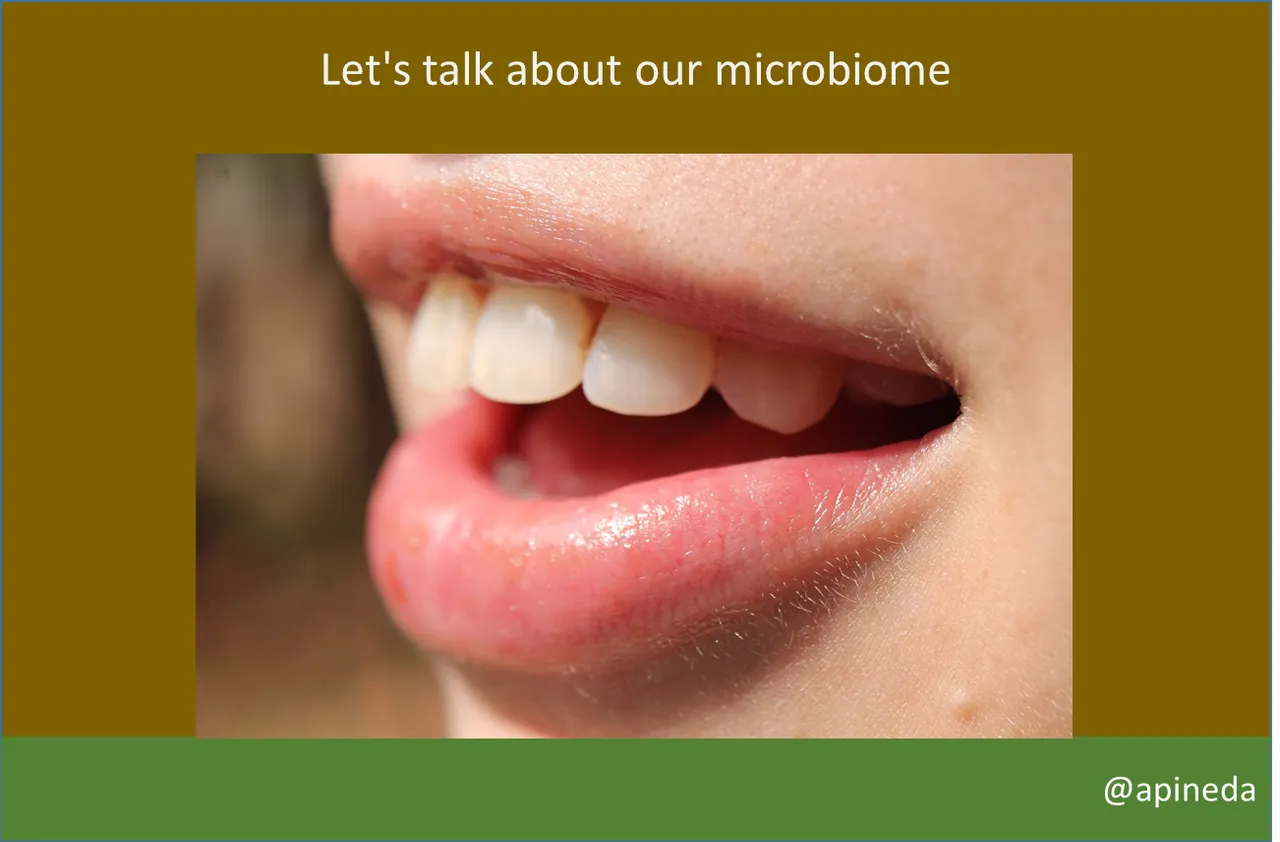I hope you had a good Valentine's Day, and if not, well, you will have next weekend to enjoy it, but don't forget to take care of yourself.
Well, today I want to talk to you about something that I was talking to a lady this morning, to whom I was explaining that our whole body is full of bacteria, that not all bacteria are bad, she was surprised and told me that she did not understand that, that the antibiotics that we take when we have an infection do not affect them, and of course they do, but the risk-benefit ratio is evaluated in that case.
Anyway, part of what I explained to her, of what we call microbiome is what I want to share with all of you, so I invite you to keep reading, what I have to tell you will surely interest you.

When we refer to the microbiome, we are talking about a term that refers to the set of microorganisms (bacteria, viruses, fungi, among others) that inhabit a given ecosystem, in the case of the human body, the microbiome refers to the set of microorganisms that inhabit our skin, mouth, intestines, and other parts of the body.
These microorganisms can have important effects on human health, as they can affect digestion, the immune system and other body functions. That is why it is important to know about it, it is part of what keeps us healthy, they fulfill very important functions in the body, and an imbalance, either an increase or decrease in the amount of this, generates great discomfort and predisposes us to diseases.
It is also important to keep in mind that some of these microorganisms that are always in our body, for example, in the skin, are capable of making us sick, but they do not do it because the skin limits them, but at the moment we have a wound or some type of injury, they enter and infect, this is what they call opportunistic microorganisms.

The human body harbors a wide variety of microorganisms that are part of its microbiome, and it is normal for them to be there, below I would like to share with you some examples of these:
Skin microbiome: Human skin is colonized by a wide variety of bacteria, fungi and other microorganisms. Some of the most common include Staphylococcus epidermidis, Streptococcus pyogenes, Corynebacterium spp, Malassezia spp, among others.
An example to be understood: bad odor in the armpits is caused by the presence of bacteria in the skin microbiome. Bacteria inhabiting the armpits feed on perspiration compounds and produce strong odor compounds such as propionic acid and isovaleric acid. Foul odor may be more pronounced in people who sweat excessively or who have a higher amount of bacteria on the skin of the armpits.
Oral microbiome: The human mouth is inhabited by bacteria, fungi and viruses. Some of the most common microorganisms include Streptococcus mutans, Porphyromonas gingivalis, Candida albicans, and herpes simplex virus.
Gastrointestinal microbiome: The human gastrointestinal tract contains a wide variety of bacteria and other microorganisms that are essential for digestion and the immune system. Some common bacteria in the gastrointestinal microbiome include Escherichia coli, Lactobacillus spp, Bacteroides fragilis, among others.
Vaginal microbiome: The female vagina harbors a large number of bacteria and other microorganisms that are important for reproductive health. Some common bacteria in the vaginal microbiome include Lactobacillus crispatus, Lactobacillus jensenii, Gardnerella vaginalis, among others.

But keep in mind that the composition of the microbiome in terms of variety and quantity can vary from person to person, and can be influenced by factors such as diet, age, gender, antibiotic use and other environmental factors.
For example, it is very difficult for a 6 year old child to have a bad odor in the armpits, however, when a teenager starts with hormonal changes this odor can become present, and will warrant the use of deodorant. The type of food we eat will also affect both the skin and the intestinal microbiome.
Based on the above, it is logical to visualize that since different countries around the world eat differently, the microbiome will vary.

stevepb
We must keep in mind that the microbiome fulfills a function in our organism, depending on the place we are talking about, for example:
Let's start by talking about its function in Digestion: The gut microbiome helps break down the food we eat and absorb nutrients. Gut bacteria produce enzymes that break down carbohydrates, proteins and fats, which facilitates digestion. For example, bacteria of the genus Bifidobacterium and Lactobacillus produce enzymes that break down lactose in milk.
Necessary in the Immune system: The microbiome also plays an important role in the immune system of the human body. Gut bacteria interact with the body's immune cells and produce compounds that regulate the immune response. For example, certain bacteria of the genus Bacteroides can stimulate the production of regulatory T cells, which help prevent excessive inflammation and autoimmunity.
It plays an important role in Metabolism: The gut microbiome can also influence human metabolism, including fat production and storage. Some studies have suggested that an imbalance in the gut microbiome may be linked to obesity and other metabolic diseases.
And of course, antibiotics affect our microbiome in general, however, when necessary they are indicated.
There are some particular complications that can occur at the intestinal level due to the imbalance that is generated in the microbiome when antibiotics are ingested, some of these adverse reactions being quite complex, but that will be the subject of the next post, so as not to make this one much longer than I think it already is.
I would like to know if you have anything to say about this, if so, you can share it in the comments and we can all benefit from it.

